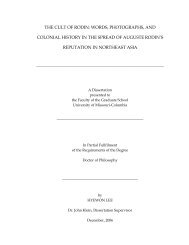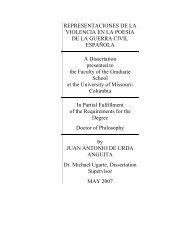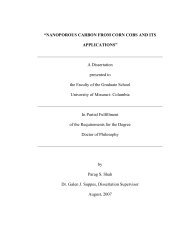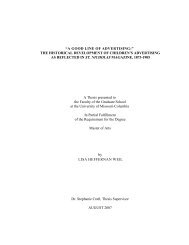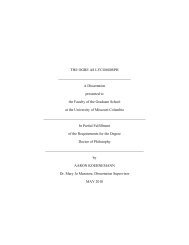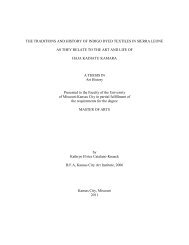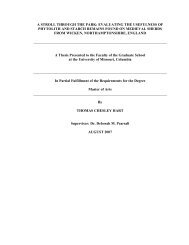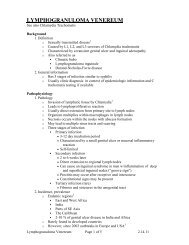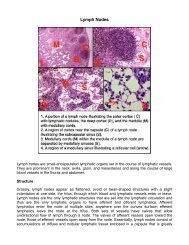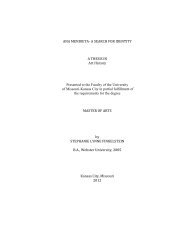Social Construction of Reality - Bad Request
Social Construction of Reality - Bad Request
Social Construction of Reality - Bad Request
Create successful ePaper yourself
Turn your PDF publications into a flip-book with our unique Google optimized e-Paper software.
Data Analysis<br />
This study utilized several mechanisms for data analysis and reduction: content<br />
analysis, open and axial coding, affinity diagramming, and interrelationship diagraphing.<br />
Long interviews. Open and axial coding was utilized on the long interview<br />
transcripts. Denzin and Lincoln (2005) explain “coding is the first step in taking an<br />
analytic stance toward the data” (p. 517.) Both long interviews will serve the UFE design<br />
by ensuring that the primary intended user’s concerns are addressed. The second<br />
interview will specifically function as the lens for “interpreting evaluation findings”<br />
(Stufflebeam and Shinkfield, 2007, p. 233).<br />
Document analysis. Content analysis was performed on the No Child Left Behind<br />
Act <strong>of</strong> 2001, Missouri School Improvement Program (MSIP)- Cycle 4, The School<br />
District’s board policy, and The School District’s vision, mission, and goals. Merriam<br />
(1998) notes that qualitative content analysis is different from conventional content<br />
analysis in that it is a flexible process, one in which the researcher can analyze with the<br />
intent <strong>of</strong> understanding theoretical relationships. For this study, the content analysis will<br />
strive to elucidate connections between compliance mandates and the district vision,<br />
mission and goals. The data reduction will result in an affinity diagram (Brassard, 1996).<br />
Archival data. Content analysis was employed on the program evaluation data and<br />
material generated from The School District’s full-scale evaluation pilot. Thereafter, an<br />
interrelationship diagraph (Brassard, 1996) was employed to reduce the data. This<br />
process allowed the researcher to map logical patterns that emerged from the information.<br />
Because it does not require linear thinking, this technique will allow for the use <strong>of</strong><br />
53



